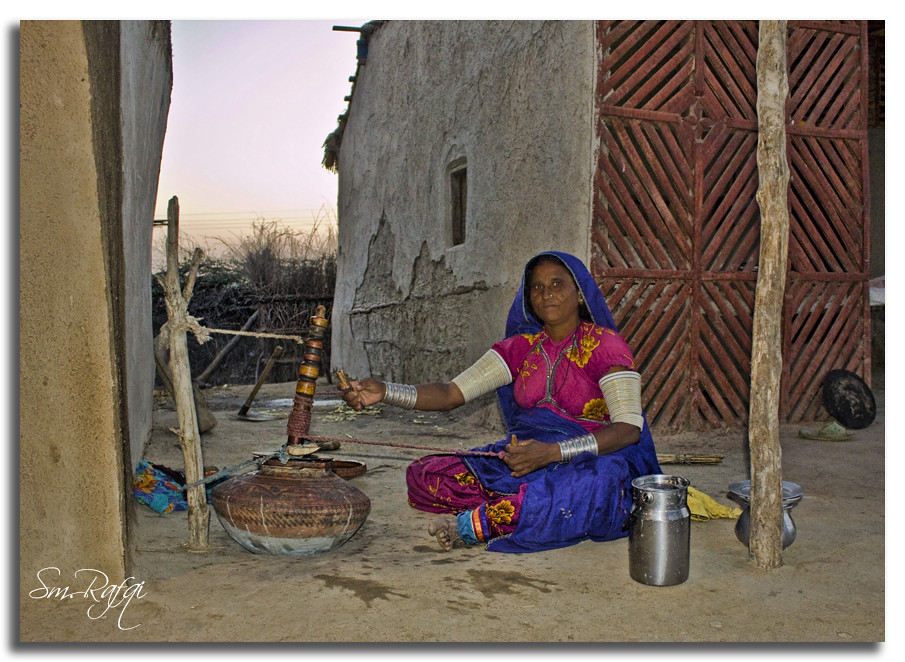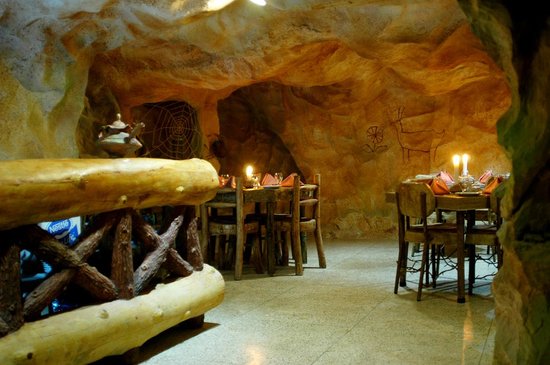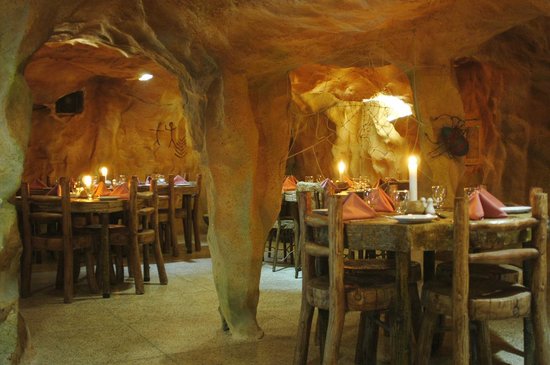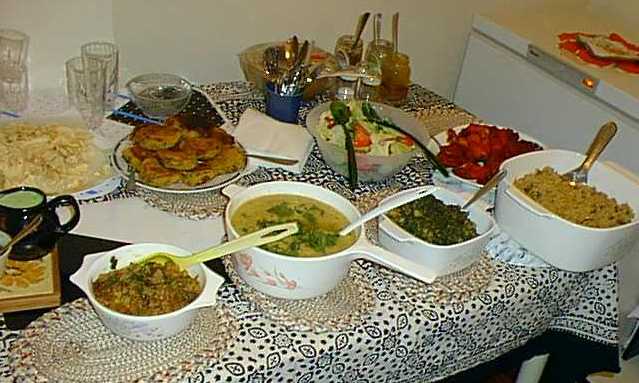How to install the app on iOS
Follow along with the video below to see how to install our site as a web app on your home screen.
Note: This feature may not be available in some browsers.
You are using an out of date browser. It may not display this or other websites correctly.
You should upgrade or use an alternative browser.
You should upgrade or use an alternative browser.
Pakistani Cuisine.
- Thread starter Kinshuk
- Start date
ghazi52
PDF THINK TANK: ANALYST

- Joined
- Mar 21, 2007
- Messages
- 103,045
- Reaction score
- 106
- Country
- Location
Interestingly, the word haleem means 'patient' in Arabic, advising one to stay the same during the long, slow cooking process.
It was a one-dish sailor and soldier food and that is how, some historians believe harisa came to the subcontinental coast of Malabar with the arrival of Arab traders.
The spicier haleem evolved when the Hyderabadi and Lucknavi cooks slow-cooked cracked wheat, meat and pulses in a sealed pot on low flame overnight. At the break of dawn, the porridge was cooled and pounded to get the right texture.
Pratibha Karan, author
Ingredients (7 grains)
1 cup wheat
¼ cup plus 1 tbsp. barley
¼ cup white maash dal (Urud)
¼ cup moong dal
¼ cup masoor dal
¼ cup basmati rice
1 cup chana dal
½ to ¾ cup oil
2 ½ lbs (Preferably boneless veal or beef stew (without fat), mutton and chicken can be used as well.)
1 ½ cup chicken or beef stock
1 ½ heaped tbsp red chillie powder (increase or decrease to taste if needed)
Salt to taste
2 to 3 tbsp ginger garlic paste
1 tbsp (heaped) coriander powder
1 ½ tsp level turmeric powder
1 ½ large onions (sliced for frying)
Ingredients for Dum (sealed pot cooking)
1 level tsp garam masala powder
¼ tsp jayfal powder
¼ tsp javatree powder
½ tsp black cumin
½ tsp green cardamom powder
Ingredients for garish (or to be served on the side)
Lemon wedges, chopped cilantro and green chillie, fried onions, julienned ginger, chaat masala, yoghurt and naan.
Method
Wash and soak all seven grains for 6 to 8 hours.
In a pan, fry onions until golden brown, adding meat, ginger garlic, chillie powder, turmeric, coriander powder, stock and salt. Cook until the korma is tender.
In a large separate pot, boil pre-soaked grains until tender, approximately 2 to 2 ½ hours. Eyeball the water quantity (for boiling and cooking) depending on the required consistency and thickness of the haleem.
Once boiled, put grains in blender and blend roughly, pouring the blended grains back in the pot for cooking.
Repeat the blending process with the meat korma, pouring the roughly blended korma into the cooking grains. Mix thoroughly on low to medium flame, stirring constantly.
Cook and stir until the correct consistency; tasting for salt and chillie content.
The haleem must be well blended, now add all five dum ingredients, mix well and initiate dum (sealed pot cooking) for a few minutes.
Garish and serve with a side of naan, if desired.
Last edited:
ghazi52
PDF THINK TANK: ANALYST

- Joined
- Mar 21, 2007
- Messages
- 103,045
- Reaction score
- 106
- Country
- Location
From Landi Kotal, the delicious balti gosht travelled to Punjab and then the rest of the world.
The mutton karahi essentially consists of small cubes of lamb or goat, which are cooked in tomatoes, green chillie, salt and preferably animal fat. The fresh meat is thought to provide the fat base for the cooking, and it is meant to be savoured directly from the karahi with a side of hot naan.
Ingredients
4 lbs goat leg, cut in small cubes
2 lbs tomatoes
7 to 10 green chillies, or to taste (chopped)
Salt to taste
Oil ½ cup, but with fresh Qurbani meat the animal fat should suffice
Method
Braise the meat on a high heat, adding green chillies and salt, cook for a few minutes adding tomatoes.
Cook until the meat is tender and the tomato juice has all but evaporated.
The orange-red tender meat is ready to be served with hot delicious naan.
Last edited:
Edison Chen
SENIOR MEMBER

- Joined
- Aug 21, 2013
- Messages
- 2,933
- Reaction score
- 11
- Country
- Location
Nice...
ghazi52
PDF THINK TANK: ANALYST

- Joined
- Mar 21, 2007
- Messages
- 103,045
- Reaction score
- 106
- Country
- Location
- Lahori Special Gajrella From Gawal Mandi
.
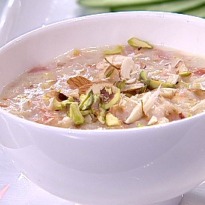
Ingredients- 1 kg desi carrots
1/2 kg basmati rice
2 litre milk
1 kg sugar
1/2 kg khoya, sweet
5 green cardamoms
2 Tbsp wheat flour
Oil
For Garnish:
10 pieces silver wark
10 pieces gold wark
50 gm almonds, crushed
50 gm pistachios, crushed - Method
Grate the carrots. Soak rice in water. Now put water in a pot and cook soaked rice and carrots together.
When the rice is cooked, then add milk and reduce it to half and then add sugar. Cook it for 10 minutes and then take it off the flame.
When cold, add khoya and green cardamom powder. Keep it in the refrigerator.
Now make a mix of wheat flour and oil and add in for thickness.
Serve with gold and silver wark on the top and with a almond, pistachio garnish.
- 1 kg desi carrots
- Lahori Special Gajrella From Gawal Mandi
ArsalanKhan21
SENIOR MEMBER

- Joined
- Jan 4, 2015
- Messages
- 4,006
- Reaction score
- -2
- Country
- Location
Some of Pakistani and Indian food has too much oil and spices and it loses nutrition value as it is cooked too much. I am surprised to see KFC at the top at 21%in Karachi while 31% in Lahore and Islamabad. Their chicken is fatty and left in milk for hours to increase weight and taste. Beef and mutton meat is from old animals that no longer provide economic value to the farmers and dairy producers. In Pakistan eating out is entertainment and very popular.
Similar threads
- Replies
- 3
- Views
- 454
- Replies
- 98
- Views
- 10K
- Replies
- 2
- Views
- 987
- Replies
- 0
- Views
- 403

